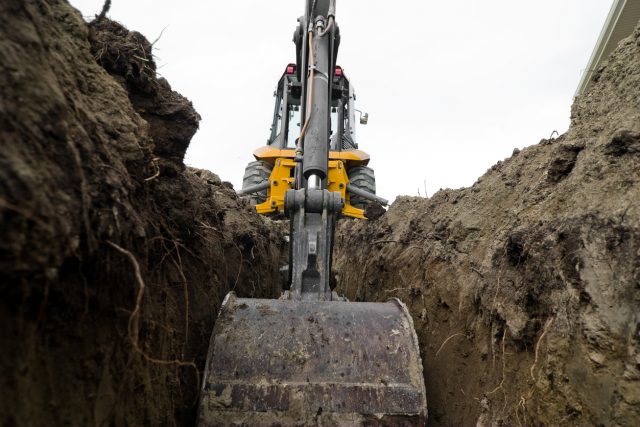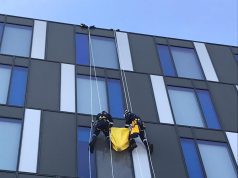
Operating heavy machinery like diggers demands precision and safety awareness, especially when pedestrians are in the surrounding area.
We’ll explore below the main methods to ensure pedestrian safety.
By implementing these strategies, you can create a safer environment for operators and pedestrians.
Proximity Warning Systems
To alert operators to the presence of pedestrians, proximity warning systems are an ideal solution to put in place. They employ sensors that detect movement within a specified range around the digger. When a pedestrian enters this danger zone, the system triggers visual and auditory alarms.
This real-time warning provides operators with the information they need to take preventive action, reducing the likelihood of accidents.
Types of Proximity Warning Systems
You need to make sure you choose the correct system for your use.
Radar-based
Radar-based systems use radio waves to detect objects and pedestrians around the digger. These are highly reliable and can work effectively in adverse weather conditions.
Camera-based
Camera-based systems utilise cameras strategically placed on the digger to provide visual feedback to the operator, enhancing situational awareness.
Sensor-based
Sensor-based systems, such as those using ultrasonic or infrared sensors, detect objects and pedestrians based on changes in sound or heat waves.
Visual Aids
Diggers often have blind spots that limit the operator’s view of pedestrians. Installing mirrors in strategic locations helps eliminate these blind spots. Consider using convex mirrors, which offer a broader field of view.
Additionally, cameras mounted on the digger provide live video feeds to the operator, offering a clearer picture of the surroundings and helping them make informed decisions.
Training and Education
A well-trained operator is an asset to any worksite. Training digger operators in pedestrian safety is vital.
Ensure operators can recognise pedestrian movement patterns and familiarise them with blind spots.
Providing training on safe operating practices and conducting regular refresher courses keeps operators vigilant and up-to-date with the latest safety protocols.
Communication
Clear communication between operators and pedestrians is essential.
Establish standardised hand signals or communication methods for interactions between both parties. Before any movements are executed, encourage them to make eye contact to ensure mutual understanding.
Having a clear communication protocol reduces any misunderstandings and potential accidents.
High-Visibility Clothing
Pedestrians need to stand out on a busy worksite. Encourage all workers, including pedestrians, to wear high-visibility clothing. It includes reflective vests and brightly coloured clothing.
The increased visibility ensures that pedestrians are easily spotted by digger operators, particularly in conditions with low visibility. This could potentially save an accident from happening.
Barriers and Signs
Diggers and pedestrians need clear, visible boundaries. Set up physical barriers around the operating area to prevent accidental pedestrian entry.
Also, you can use clear and bold signs to show restricted zones. These measures help prevent unauthorised access to hazardous areas and serve as a visual reminder of safety protocols.
Regular Maintenance and Inspection
To stay safe, equipment must function properly. Regularly inspect and maintain sensors, cameras, and warning systems.
Malfunctioning equipment can jeopardise safety, so conducting routine checks allows you to identify and rectify issues promptly, maintaining effective safety.
Collaboration
Safety is a collective responsibility that extends to both operators and pedestrians. It is crucial to promote a culture of respect and awareness at the worksite.
Promote open communication and feedback to continuously improve safety measures.
Regular safety meetings provide a space to address concerns and brainstorm ideas for enhanced pedestrian detection.
Prioritising pedestrian safety not only prevents accidents but also promotes accountability and professionalism. Safety is a shared commitment that entrusts digger operators and pedestrians to work harmoniously and securely.













